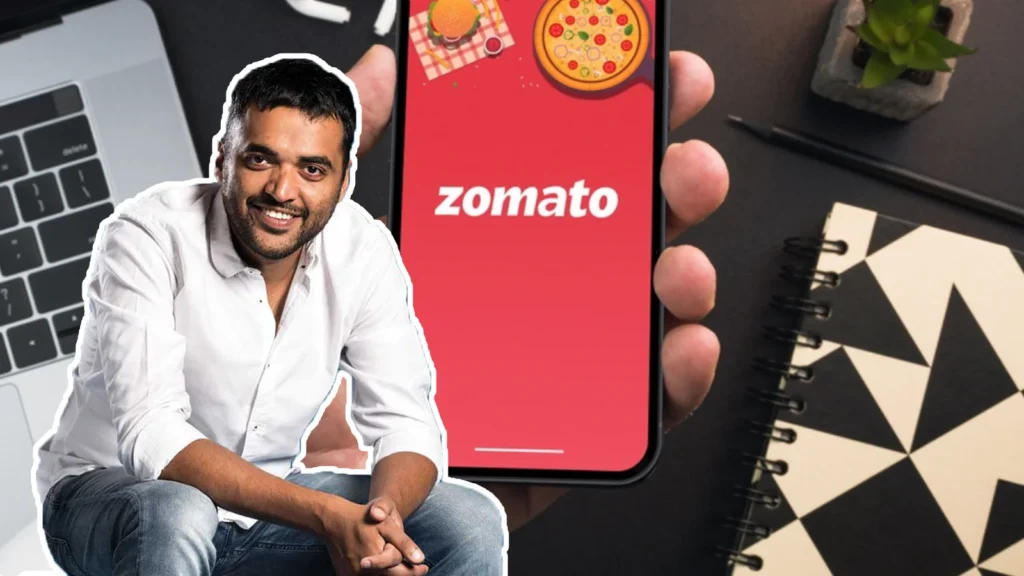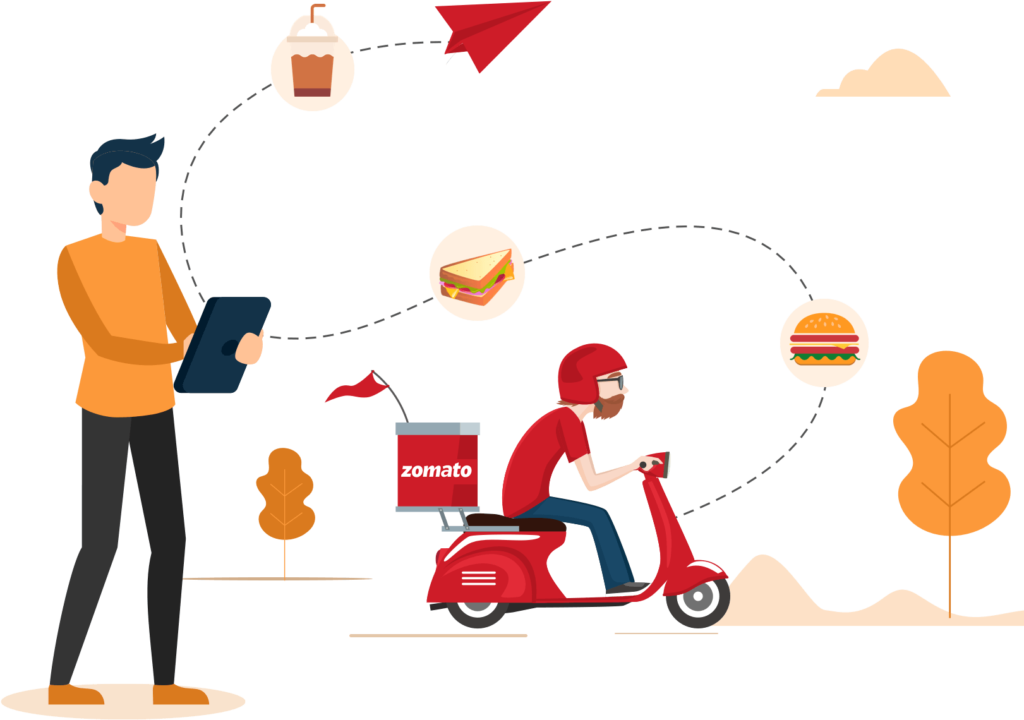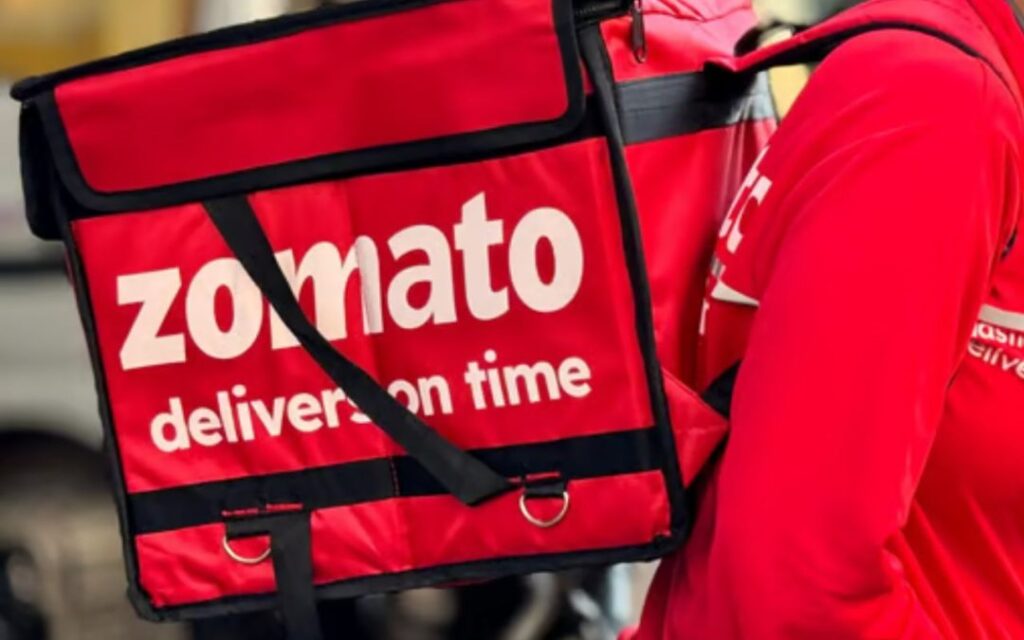
- Company Overview: Founded in 2008, Zomato is a leading online food delivery and restaurant discovery platform. Starting as a simple menu aggregator, Zomato evolved to disrupt the food industry through technological innovations and aggressive expansion.
- Purpose: This case study examines Zomato’s business model, market strategy, growth trajectory, and the critical operational and financial lessons from its journey. It is designed to offer insights for MBA students and business executives on strategic scaling, customer engagement, and digital disruption in the food delivery industry.

Timeline of Zomato’s Key Developments
- 2008: Launched as “Foodiebay” to scan and list restaurant menus in Delhi.
- 2010: Rebranded to Zomato, transitioning to a full-fledged online platform.
- 2012-2014: Expanded globally into UAE, South Africa, and other markets.
- 2015: Entered the food delivery market to compete directly with Swiggy.
- 2021: Became the first Indian food delivery startup to go public, with a successful IPO on the NSE and BSE, raising significant capital for further expansion.
3. Business Model
- Platform Strategy: Zomato operates as an aggregator and marketplace for restaurants, offering a dual-service platform:
- Restaurant Listings and Reviews: Initial service focusing on providing restaurant information and user reviews.
- Food Delivery: Expanded in 2015 to offer on-demand food delivery, forming partnerships with thousands of restaurants and a fleet of delivery personnel.
- Revenue Streams:
- Commissions from partner restaurants.
- Delivery Charges from customers.
- Advertising and Sponsored Listings.
- Subscription Services: Zomato Pro offers exclusive discounts and privileges.
- Cloud Kitchens: Zomato has strategically ventured into cloud kitchens, allowing partner restaurants to cater to high-demand areas without setting up full physical locations.

4. Operations and Technology
- Data-Driven Demand Forecasting: Zomato leverages big data and AI to predict customer preferences and optimize delivery times. Their proprietary systems analyze peak times, popular dishes, and delivery logistics to improve efficiency.
- Supply Chain and Logistics:
- Hyperlocal Logistics: Zomato’s network is designed to handle the complexities of last-mile delivery, utilizing algorithms to match demand with nearby delivery personnel, reducing wait times.
- Cloud Kitchen Partnerships: These kitchen hubs are strategically located to maximize reach and minimize delivery times.
- Focus on Customer and Restaurant Onboarding: Zomato’s tech interface simplifies onboarding for restaurants and delivery partners, providing detailed insights and operational tools to enhance customer satisfaction.
5. Brand Management and Marketing Strategy
- Localized and Relatable Marketing:
- Zomato uses humor and culturally relevant marketing on social media, becoming a popular brand among young, urban consumers.
- Creative social media strategies include content around trending events, drawing engagement across multiple demographics.
- Strategic Collaborations:
- Partnerships with leading restaurant chains and offering exclusive deals to Zomato Pro members helped drive loyalty.
- IPO Marketing:
- The IPO was marketed as a landmark event, appealing to the Indian public’s enthusiasm for investing in homegrown tech giants.

Financial Performance and IPO
- IPO Success: In 2021, Zomato’s IPO was oversubscribed 38 times, raising ₹9,375 crores (~$1.3 billion).
- Financial Metrics:
- Revenue Growth: Between 2018 and 2021, Zomato’s revenue surged fivefold due to aggressive market expansion and increased customer adoption.
- Profitability Challenges: Despite revenue growth, Zomato has faced profitability issues due to high operational costs and intense competition.
- Long-term Strategy: Zomato aims to achieve profitability by increasing operational efficiency, reducing delivery costs, and investing in high-margin verticals like cloud kitchens.
7. Key Business Lessons from Zomato’s Journey
- Operations and Logistics:
- Scalable Infrastructure: Building an agile and scalable logistics system is critical for on-demand services.
- Cloud Kitchens: Investing in cloud kitchens can help companies serve high-demand areas without excessive capital expenditure.
- Brand Management:
- Cultural Relevance: Leveraging humor and local culture in brand communications can drive organic engagement and brand loyalty.
- Transparency and Customer Trust: Engaging transparently through platforms like social media helps in maintaining a positive public image.
- Marketing:
- User-Generated Content: Zomato’s encouragement of reviews and ratings built an ecosystem where users contribute to the brand’s credibility.
- Social Media Presence: Regular, relatable content on social media maintains brand recall and strengthens customer connections.
- Finance:
- IPO Strategy: The IPO not only raised capital but also strengthened brand prestige, opening doors to future investments.
- Balancing Growth with Profitability: Zomato’s experience underlines the importance of balancing rapid expansion with sustainable financial management.

Current Challenges and Future Outlook
- Competition: Zomato faces stiff competition from Swiggy and other international players expanding in the Indian market.
- Profitability: As Zomato scales, managing costs without compromising service quality remains a priority.
- Expansion into New Verticals:
- Zomato is exploring sustainable packaging, drone deliveries, and grocery delivery to diversify its service offerings and expand its revenue base.
- Future Opportunities: With India’s online food market projected to grow significantly, Zomato is well-positioned to leverage its established brand and customer base to tap into emerging markets and new segments.
Brief Overview
Zomato’s success story is a shining example of transforming food delivery in India, illustrating how it disrupted the online food delivery and restaurant discovery industry to become a market leader. Launched in 2008 as “Foodiebay,” Zomato evolved through technological innovations and strategic expansion into a unicorn startup and eventually conducted a landmark IPO in 2021, raising ₹9,375 crores. With a dual business model comprising restaurant listings, user reviews, and on-demand food delivery, Zomato addressed last-mile logistics challenges through hyperlocal logistics systems and cloud kitchen partnerships. Their asset-light business model and data-driven operations, including demand forecasting and AI-based supply chain optimizations, allowed them to scale efficiently. Leveraging localized marketing strategies, Zomato used humor and cultural relevance on social media to build a strong brand presence among urban, young consumers. With features like Zomato Pro for exclusive deals and privileges, the platform drove customer loyalty. Despite facing profitability challenges due to high operational costs, Zomato’s long-term strategy includes reducing delivery expenses, tapping into high-margin cloud kitchens, and exploring sustainable packaging and drone deliveries. This case study underscores critical business lessons in operations, marketing, brand management, and finance, such as the importance of scalable infrastructure, user-generated content, and balancing rapid growth with profitability. As India’s online food market expands, Zomato is poised to maintain its leadership while navigating competition from players like Swiggy and exploring new verticals.
Leave a Reply